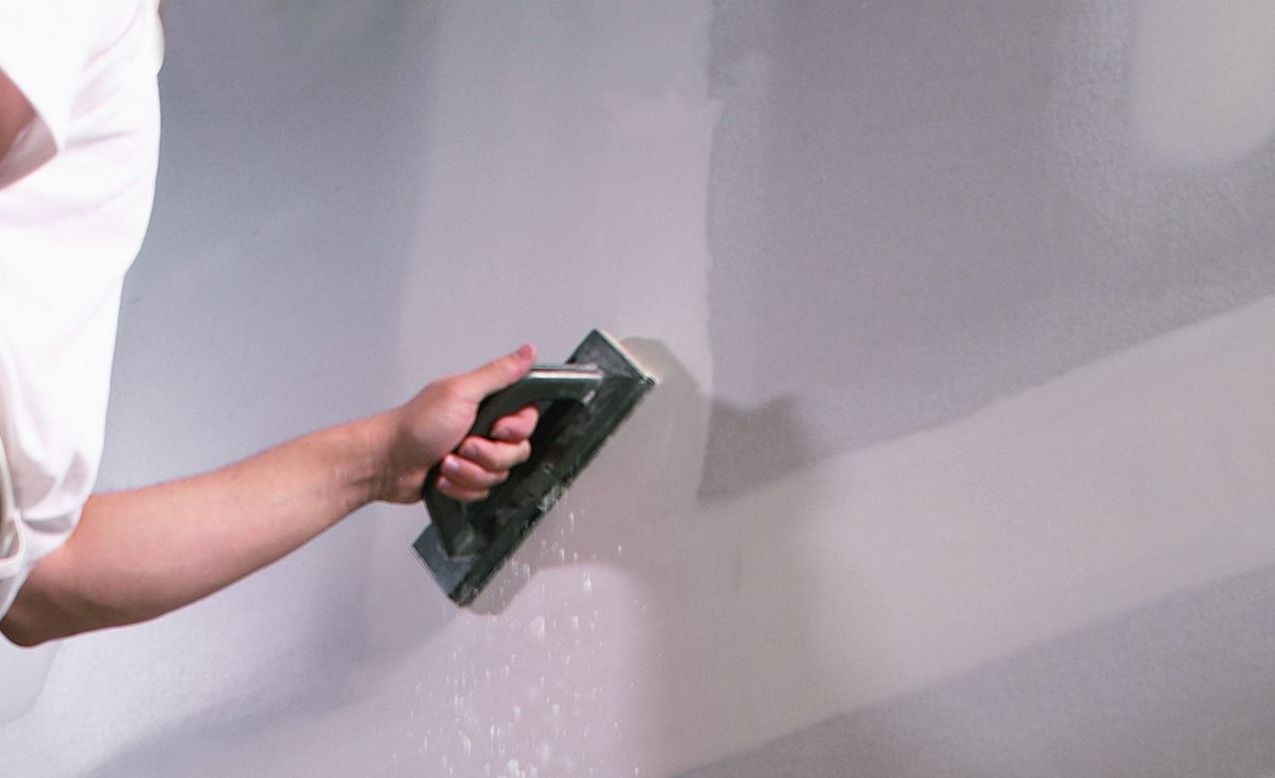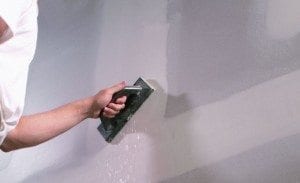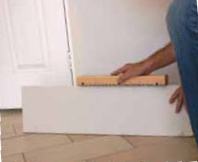
7 drywall tips from the experts
For better results when you drywall, check out these drywall tips from the experts.
When cutting drywall, you score one side, snap it and cut the backing. If that leaves you with a ragged edge, wrap a piece of expanded metal around a 12- to 18-inch piece of 2×4 and attach the metal with a couple of screws on each side. Slide the 2×4 piece up and down the ragged edge to smooth and square the edges. If you’ve cut a piece of drywall that’s a little large for an area, you can also use this tool to shave the drywall panel to fit. –Dwight H., New Castle, Pennsylvania
Sanding drywall
To sand drywall in areas where you want to avoid creating a lot of fine dust, simply wet the entire area slightly with a damp sponge in a consistent, big circular motion. Be careful not to get it too wet, and when you sand, the dust will clump up and fall to the floor at your fee. –Jorge D., Houston, Texas
 Patching drywall
Patching drywall
When patching drywall, cut the hole as close to the nearest stud as possible, so you can firmly secure the new clean patch.
Before installing drywall
Because gypsum panels are susceptible to damage from moisture and extreme heat, it’s best to keep them clean, dry and at temperatures between 40°F and 95°F. Remove the plastic protective covering and stack panels flat until you are ready to use them. If you replace drywall, always use panels with the same rating or better for sound, fire and humidity resistance.
For tight drywall joints
If you are taping a drywall joint that requires a tight fit, bevel cut the gypsum board with a sharp utility knife to make the gap between panels as small as possible.
Dealing with air bubbles in drywall
Pits on the surface of the drywall are air bubbles that are caused by over- or under-mixing the joint compound. One of the drywall tips from the experst to remove air bubbles is to apply pressure to the bubbles with a joint knife until the pits are gone. If you didn’t notice them until the wall dried, you’ll have to cover the bubbles with joint compound and sand smooth.
Removing texture from drywall
To remove texture from drywall, wet the wall with a spray bottle to loosen the material. Then use a scraper with a flat, wide blade to remove the texturing material. Use only enough water to loosen the material to avoid damaging the drywall. If you mark the sheetrock with the scraping blade, patch the area with joint compound.


